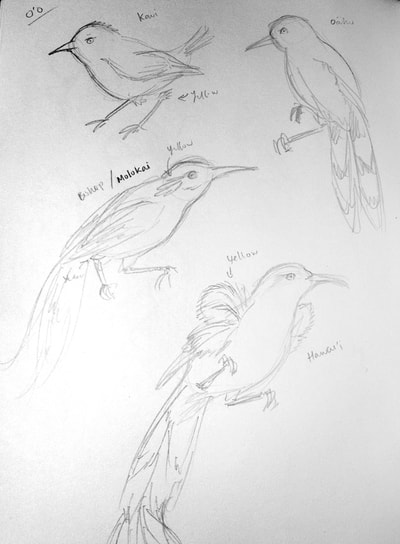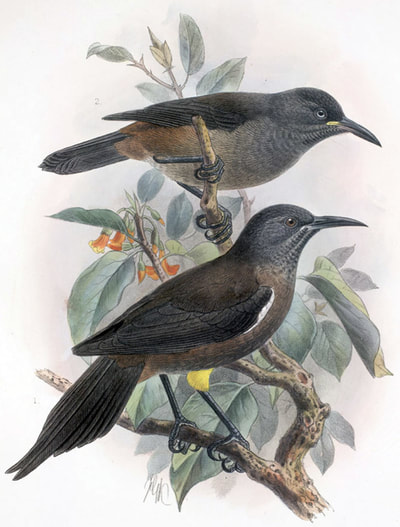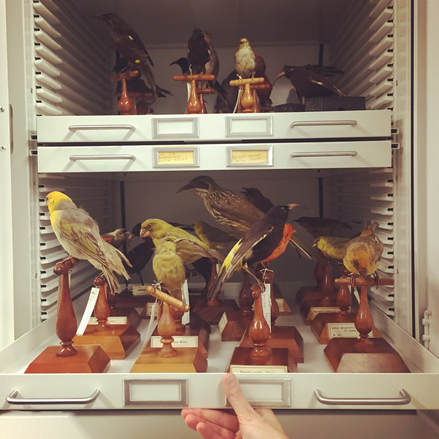|
The National Geographic, the National Audubon Society, BirdLife International, and the Cornell Lab of Ornithology have declared 2018 to be a yearlong celebration of birds. 2018 is the 100th anniversary of the signing of the Migratory Bird Treaty Act, one of the most important legislation signed in the U.S. that have continued to protect bird populations in North America and the Pacific, including Hawai‘i. As recently as 2010, twenty four bird species found only in Hawai‘i were added to the list of protected birds.
8 Comments
Artist Jamie Allen spent the day at the Bishop Museum studying and drawing sketches from the Botany and the Vertebrate Zoology Collection Private collections. She is going to illustrate native Hawaiian birds important to the Hawaiian culture. Here are sketches of the i‘iwi and the ‘elepaio forest birds, as well as photos from the Bishop museums of the birds and the plants important to them. Luckily for us, both the i‘iwi and the ‘elepaio are still with us (unlike the ‘o‘o mentioned in the previous post), and conservationists today are working hard to protect them. We have some early sketches by Jeanine Higa, who is working with fellow animator Kayla Abalos on the section about the Kaua‘i ‘o‘o's extinction, whose distinctive song was last heard in 1987. These birds were famous for their elaborate and beautiful mating calls sung by both the male and female. You can hear the heartbreaking last recorded ‘o‘o song here.
Their distinctive yellow feathers that would surround their legs were carefully plucked out by native Hawaiians who used them on royal clothing such as the ʻAhu ʻula, pictured below. The different genuses of ‘o‘o were once found on O‘ahu, Kaua‘i, Molokai, and Hawai‘i but are now all extinct. According to the U.S. Fish and Wildlife Services, "The exact reasons for their decline are not known, but avian diseases and land clearing are believed to be major factors." Check out some early sketches by artist Laura Margulies of the colorful ‘i‘iwi and the ‘akohekohe. She even manages to capture the ‘i‘iwi feeding from a tubular flower - an evolutionary trait in which the bird's long curved beak seems to have evolved in tandem with the distinctly shaped flower. Can't wait to see these being animated later! Stay tuned! One of our brilliant artists involved in our project, Pawel Nuckowski of Oahu Films, has shared with us a short video of the initial stages of what he is currently working on about the flightless Hawaiian Stilt Owl. These birds have been extinct for many hundreds of years and we only know about them through fossils, so it's magical to see them come back to life in this video! We'll be writing about the progress of our amazing project to give you a glimpse into the various activities that are happening, from the behind-the-scenes planning, outreach activities, to pretty much anything else that comes up! Stay tuned!
|
Melissa Price
|
Proudly powered by Weebly







 RSS Feed
RSS Feed